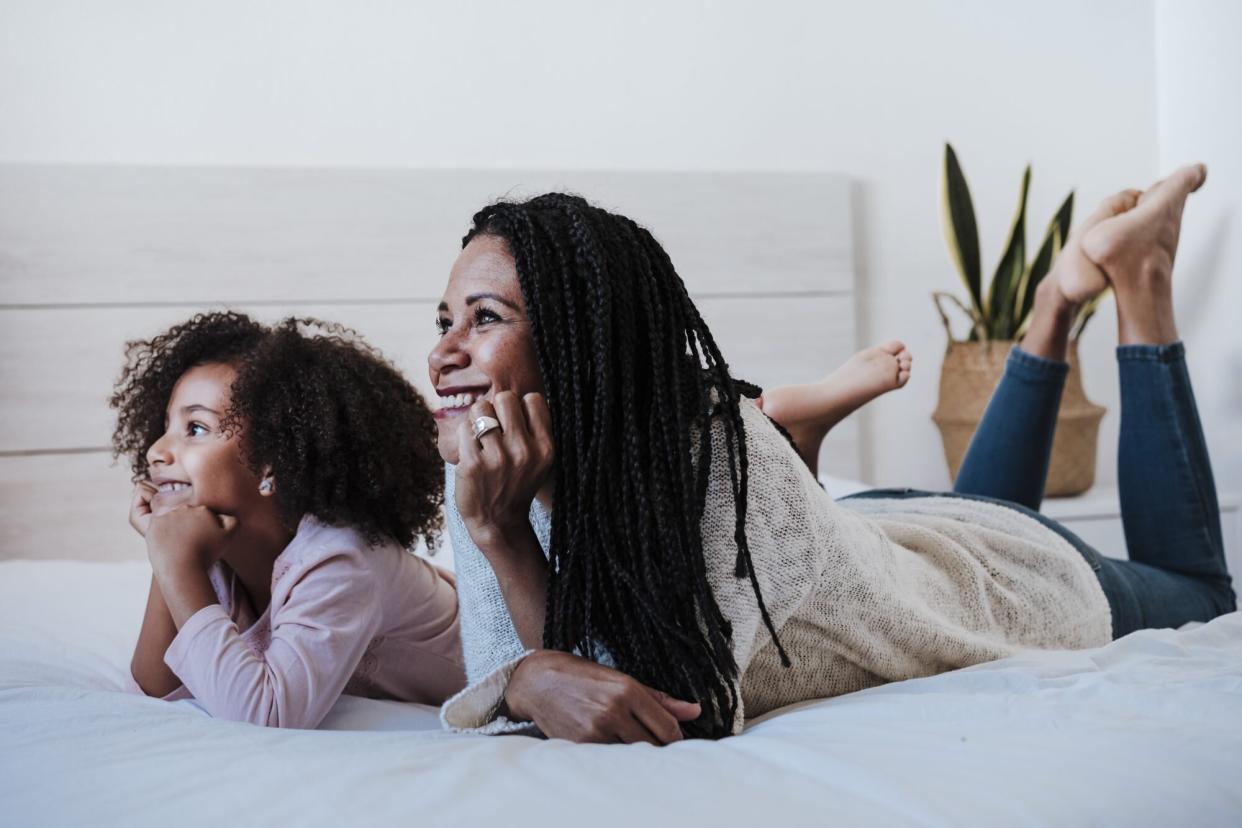Why I'm Showing My Daughter Black and Brown People Thriving on TV

Getty | Westend61
"Why are all the grandparents in one bed?"
My daughter and I were watching the 1971 classic Willy Wonka & the Chocolate Factory when she asked the question I'd been asking myself for years: What's up with that four-person bed?
I answered her in the simplest way possible: Because they're poor.
Confused, my daughter shot back, "But they're white."
Shocked, I paused the movie to assure her that skin color did not determine one's wealth. Some white people are poor, just like some Black and Brown people are rich. I tried to think of an example from one of her favorite TV shows or movies, but nothing came to mind, and she was impatient. She wanted to see if Charlie found a golden ticket. When I asked where she got this idea, she shrugged her shoulders, and I didn't push it. After all, there was a tinge of familiarity in what she had just said.
The TV families of my youth were the Keatons, the Seavers, the Tanners, and the Taylors. These were "American families," and not much different from mine, except for one key aspect: they were white.
It didn't matter that my Mexican-American family lived in a big, safe house. I imagined we were the exception to the rule. Both of my parents grew up in working-class families and they strived to give their kids a better life. This shaped my perception: Latinos, like other people of color, are supposed to struggle for the American dream, but white people are born into it. If there were poor white people in the world, I didn't see them on TV. They existed in places as strange as Charlie Bucket's home and were as mythical as Oompa Loompas.
Even though Family Matters, The Fresh Prince of Bel-Air, and The Cosby Show were also popular TV shows in my childhood, in comparison to the enormity of white-centered ones, these fictitious families did little to change my perspective. And I still didn't see what I'd longed for all along: a family that looked like mine with Spanish-speaking grandparents, skin in every shade of brown, piñatas at every party, fruit covered in lime and chili, and all the other tiny things that give my American life a bit of a different flavor.
Now I'm on a mission to find child-appropriate examples of Black and Brown people living lives free from poverty and danger, not because I'm trying to shield my daughter or because these stories don't matter, but because it's important she that sees people of all appearances living in abundance. Some Black and Brown people live in expensive Manhattan penthouses like Will Stacks in the 2014 Annie remake, just like some white orphans sing songs that hope for a better tomorrow like Annie in the 1982 original.
We started with The Proud Family: Louder and Prouder, featuring an upper-middle-class Black family run by a career-driven mom and goofy but ambitious dad. We laughed until our bellies hurt when we watched Victor & Valentino, a show about two Latino half-brothers who encounter the supernatural with the help of their fierce grandma Chata. We also watched Yes Day, which depicts a mixed Latino family living in a nice L.A. neighborhood. The family is bi-racial, but they don't make a big thing of it. It's normal. And in Amphibia, we saw the Thai-American protagonist Anne, whose parents own a restaurant, travel to a mystical land to befriend a family of amphibians.
There are so many more titles to cross off our list: The Casagrandes, Craig of the Creek, Mixed-ish, Diary of a Future President, Molly of Denali, and Doogie Kamealoha, M.D. And when we finish those, we'll search for more. So far, nothing has looked as unusual to my daughter as four people in a bed. There haven't been any big questions. Everything just looks normal.

